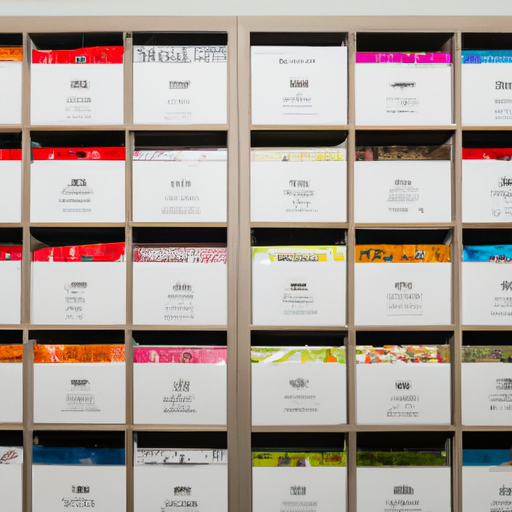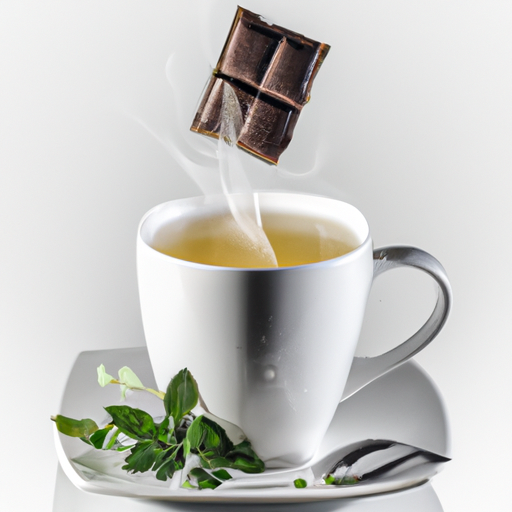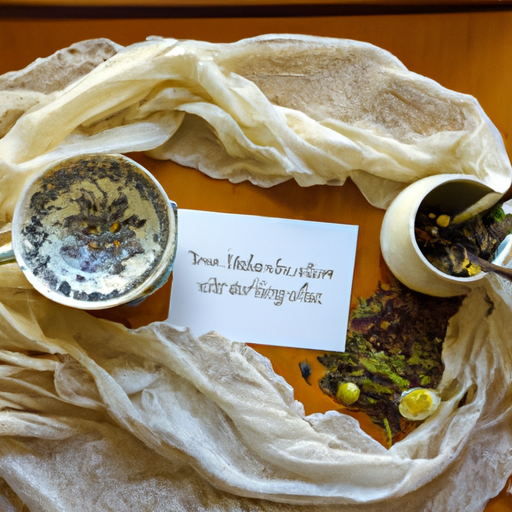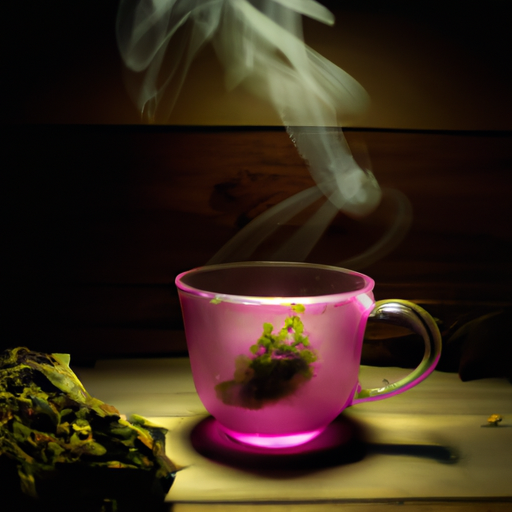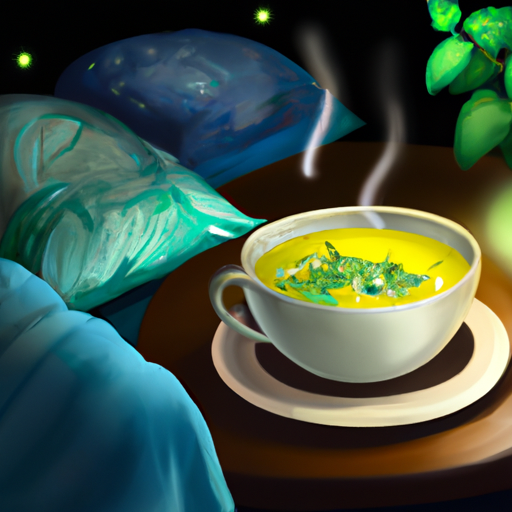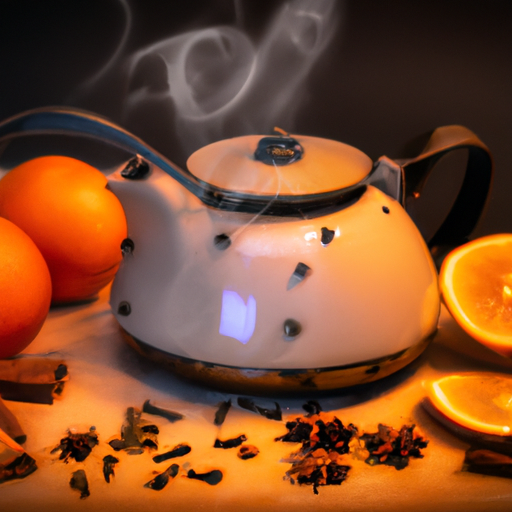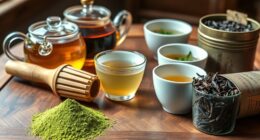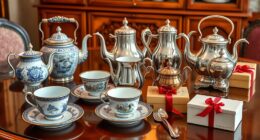I recall the initial time I steeped a cup of herbal tea using a tea bag that had been forgotten in the depths of my pantry for quite some time. As the boiling water blended with the dried herbs, a stale aroma wafted through the room, alerting me that something was amiss. This incident sparked my curiosity about the shelf life of herbal tea bags.
Just like any other consumable product, herbal tea bags have a shelf life. And while they may not come with an expiration date stamped on their packaging, there are certain signs that indicate their freshness has waned.
In this article, I will delve into the factors that affect the lifespan of herbal tea bags, how to properly store them, and tips for extending their shelf life.
So, grab a cup of your favorite herbal tea, and join me as we explore the world of herbal tea bags and uncover the secrets to enjoying a fresh and flavorful brew every time.
Key Takeaways
- Herbal tea bags have a shelf life of 1-2 years.
- Storing tea bags in a cool, dry place prolongs freshness.
- Signs of spoiled tea bags include color change, musty smell, and brittleness.
- Discard tea bags stored for over a year to prevent spoilage.
Understanding the Shelf Life of Herbal Tea Bags
You may be wondering how long your herbal tea bags will stay fresh and flavorful. The shelf life of herbal tea bags can vary depending on several factors.
One important factor is the proper brewing techniques used. To ensure maximum freshness, it’s recommended to steep the tea bags in hot water for the appropriate amount of time, usually around 5-7 minutes. This allows the flavors and benefits of the herbs to fully infuse into the water.
Additionally, storing the tea bags in a cool, dry place can help prolong their freshness. It’s important to note that the potency and flavor of herbal tea can diminish over time, so it’s best to consume them within 1-2 years of purchase.
Now, let’s explore the factors that affect the freshness of herbal tea bags.
Factors That Affect the Freshness of Herbal Tea Bags
To maximize the freshness of your herbal tea bags, consider storing them in an airtight container with a desiccant packet to absorb excess moisture, like a silica gel packet commonly found in new shoe boxes. This will help preserve the aroma and flavor of the tea.
The freshness of herbal tea bags can be influenced by several factors. Exposure to air, light, heat, and moisture can all affect the quality of the tea. Air can cause the tea to oxidize and lose its flavor, while light can degrade the tea leaves and diminish the aroma. Heat and moisture can also promote the growth of mold and bacteria, leading to spoilage.
By keeping your herbal tea bags in an airtight container with a desiccant packet, you can protect them from these factors and ensure their freshness for a longer period of time.
Transitioning into the next section, it’s important to be aware of the signs of spoiled herbal tea bags.
Signs of Spoiled Herbal Tea Bags
Exposure to air, light, heat, and moisture can all impact the quality of herbal tea bags, and it’s crucial to be able to identify the signs of spoilage. One of the main indicators of spoiled tea bags is a change in color. If the tea bags have turned brown or black, it’s a clear sign that they’ve gone bad.
Another sign is a musty or moldy smell coming from the bags. This indicates that moisture has seeped into the tea, causing it to spoil. Additionally, if the tea bags have become brittle or crumbly, they’re no longer fresh.
It’s important to note that consuming spoiled tea bags can lead to stomach discomfort or illness. To avoid this, it’s essential to store herbal tea bags properly.
[Transition sentence into the subsequent section about ‘how to properly store herbal tea bags.’]How to Properly Store Herbal Tea Bags
When it comes to properly storing herbal tea bags, there are a few key points to keep in mind. Firstly, it’s important to keep them away from moisture and light, as these can cause the tea bags to deteriorate more quickly. Secondly, using airtight containers can help preserve the freshness and flavor of the tea bags for a longer period of time.
By following these guidelines, you can ensure that your herbal tea bags stay in optimal condition for a delightful cup of tea every time.
Keep Away from Moisture and Light
Avoiding moisture and light is like shielding herbal tea bags from their worst enemies. Moisture can cause the tea bags to become damp and lose their flavor. It can also lead to the growth of mold or bacteria, making the tea bags unsafe to consume.
To protect tea bags from moisture damage, it’s important to store them in a dry place, away from any sources of moisture such as sinks or windows. Additionally, light can also degrade the quality of herbal tea bags. Exposure to sunlight or artificial light can cause the tea leaves to break down and lose their aroma and taste.
Therefore, it’s best to store tea bags in a dark cupboard or pantry. By taking these precautions, you can ensure that your herbal tea bags stay fresh and flavorful for a longer period of time.
Speaking of freshness, let’s move on to the next section about using airtight containers to preserve the flavor and aroma of herbal tea bags.
Use Airtight Containers
To keep your tea fresh and flavorful, seal it in an airtight container. An airtight container provides numerous benefits for storing herbal tea bags. Firstly, it prevents moisture from entering the container, which can degrade the quality and taste of the tea. Secondly, it blocks out light, which can cause the tea to deteriorate faster. Finally, an airtight container helps to preserve the aroma and flavor of the tea, ensuring a delightful experience with every brew.
Here is a table that highlights some alternatives to airtight containers:
| Alternative Containers | Benefits |
|---|---|
| Glass jars with tight lids | Keeps tea fresh and visible |
| Stainless steel canisters | Provides a durable and long-lasting option |
| Vacuum-sealed bags | Removes air and extends shelf life |
By using an airtight container or one of these alternatives, you can extend the shelf life of your herbal tea bags and enjoy the soothing flavors for a longer period.
Extending the Shelf Life of Herbal Tea Bags
By properly storing herbal tea bags, you can extend their shelf life and enjoy a fresh cup of tea whenever you desire. To extend the freshness of herbal tea, it’s essential to preserve the tea bags in airtight containers. These containers help protect the tea bags from exposure to air, moisture, and light, which can degrade the quality and flavor of the tea over time.
When storing herbal tea bags, make sure to seal the container tightly after each use to maintain freshness. Additionally, it’s recommended to keep the containers in a cool, dry place away from direct sunlight. By following these guidelines, you can prolong the shelf life of your herbal tea bags and ensure a delightful tea experience.
As we discuss when to discard herbal tea bags, it’s important to consider certain factors.
When to Discard Herbal Tea Bags
It’s important to know when it’s time to throw away your herbal tea bags, and one interesting statistic is that on average, tea bags lose about 5-10% of their flavor every month. This means that over time, the taste and aroma of your herbal tea will diminish, making it less enjoyable to drink. To prevent tea bag spoilage, it’s recommended to discard old tea bags that have been stored for more than a year. The quality of the tea leaves deteriorates over time, resulting in a less flavorful brew. To emphasize this point, here is a table showcasing the flavor loss of herbal tea bags over time:
| Time Stored | Flavor Loss |
|---|---|
| 3 months | 15-30% |
| 6 months | 30-60% |
| 1 year | 60-90% |
| 2 years | 80-95% |
| 3 years | 90-100% |
By discarding old tea bags, you can ensure that you’re always enjoying a fresh and flavorful cup of herbal tea. Now let’s move on to some tips for enjoying fresh herbal tea without compromising its taste.
Tips for Enjoying Fresh Herbal Tea
Now, let’s explore some handy tips to savor the full flavor of your fresh cup of herbal tea.
To brew the perfect cup, start by using fresh, high-quality herbal tea bags.
To enhance the taste, steep the tea bags in hot water for around 5-7 minutes, ensuring that the water isn’t boiling to prevent the tea from becoming bitter.
For a stronger flavor, you can steep it for a few extra minutes.
Experiment with different steeping times to find your preferred strength.
Remember, herbal teas have various health benefits, so choose flavors that suit your needs.
To maximize these benefits, consider adding a squeeze of lemon or a teaspoon of honey.
Lastly, sit back, relax, and enjoy the soothing and refreshing experience of drinking your freshly brewed herbal tea.
Frequently Asked Questions
Can I use herbal tea bags past their expiration date?
Can I use expired herbal tea bags? While they may not taste as fresh, they are generally safe to use. However, the flavors and health benefits may be diminished. Alternatively, you can repurpose them for things like potpourri or compost.
How can I tell if my herbal tea bags have gone bad?
To properly store herbal tea bags, keep them in an airtight container away from heat, light, and moisture. Signs that herbal tea bags have gone bad include a change in color, an off smell, or a stale taste.
Can I store my herbal tea bags in the refrigerator to extend their shelf life?
Storing herbal tea bags in the refrigerator is like putting a freeze on freshness. While it may extend their shelf life, it can also affect the taste due to moisture absorption.
What is the best way to store loose herbal tea versus tea bags?
The best way to store loose herbal tea is in airtight containers, like glass jars or metal tins, to maintain freshness. Keep them in a cool, dry place away from sunlight to preserve flavor and potency.
Can I reuse herbal tea bags to make a second cup of tea?
Yes, herbal tea bags can be reused to make a second cup of tea. However, using fresh tea bags provides optimal flavor and benefits as they contain more essential oils and antioxidants.
Conclusion
Well, who would’ve thought that something as seemingly innocent as herbal tea bags could’ve an expiration date? But alas, my friends, even the most natural of drinks have a shelf life.
It’s important to understand the factors that can affect the freshness of your herbal tea bags and to be aware of the signs of spoilage. By properly storing your tea bags and knowing when to say goodbye, you can extend their shelf life and continue enjoying fresh, flavorful herbal tea.
So, raise your cup and savor every sip, ’cause even the simplest pleasures in life have an expiration date.

